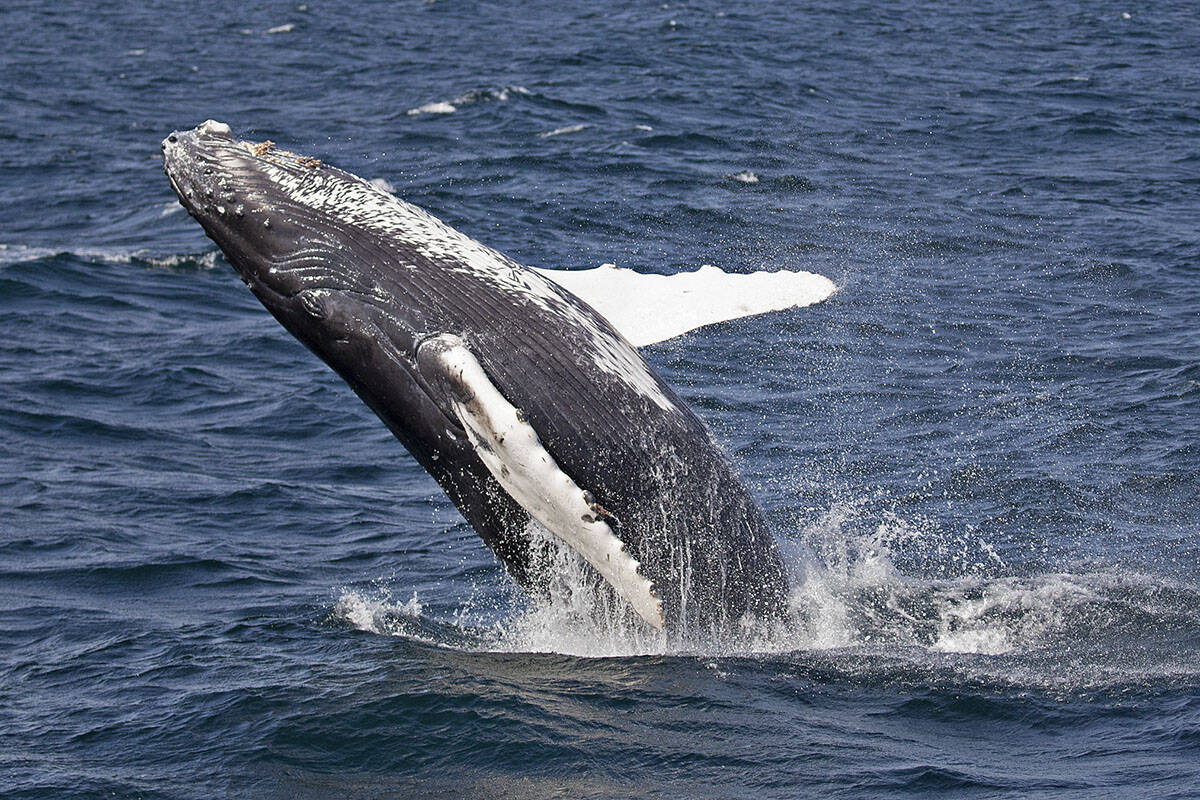A record-breaking 21 calves were born to Salish Sea humpback whales this season.
That’s almost twice the number that was reported in 2020 when 11 calves were spotted, according to the Center for Whale Research in Washington. Researchers are unsure what has led to to the baby boom.
“It’s possible the last two years had an abundance of food for the whales, or it could be as simple as the fact that as the number of adult whales in the population grows, so too does the number of calves we can expect to see each year,” Erin Gless, executive director of the Pacific Whale Watch Association, speculated in a press release.
All 21 of the calves and the rest of the Salish Sea humpback whales are using the fall months to fill their bellies before heading south. An adult humpback can eat roughly 2,000 pounds of fish and krill every day, according to the whale watch association. Soon, the whales will swim to breeding grounds near Hawaii, Mexico and Central America to give birth and mate before returning in the late spring.
The calves themselves will likely only make the trip once with their mothers before they are able to navigate it on their own.
“Once they’re familiar with our waters, they will often return year after year to feed,” Wendi Robinson, a naturalist with Puget Sound Express, said in the release.
READ ALSO: Researcher investigates accumulation of microplastics in B.C. whales
Whale watchers just south of Victoria were recently delighted by mother Split Fluke and her newest calf slapping their tales against the water. Researchers believe tail slapping is a way for humpbacks to communicate with each other. Photographs suggest Split Fluke travels to Mexico during the winter months where she has birthed three calves so far.
Another Victoria-regular, 10-year-old Dreamer and her new calf were spotted earlier this week in the Strait of Georgia. The mother and calf were spotted and identified by a naturalist off the coast of Hawaii in March.
“Our community was excited to receive the March report from Hawaii and we’re thrilled to say that both mom and baby have arrived safely in the Salish Sea,” Gless of the Pacific Whale Watch Association said.
The return of the whales next season will help researchers to determine whether 2021 was a one-off or if the trend of a growing humpback population is here to stay.
READ ALSO: Ocean Cleanup makes first dent in eradicating Great Pacific Garbage Patch
Do you have a story tip? Email: jane.skrypnek@blackpress.ca.
Follow us on Twitter and Instagram, and like us on Facebook.

